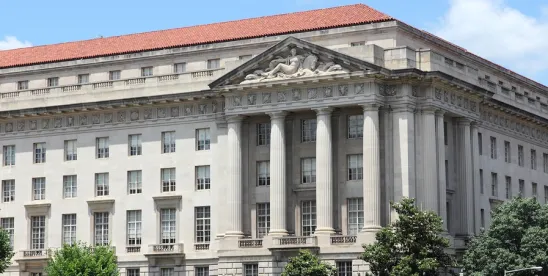Stormwater permitting requirements for many industrial facilities are set forth in US EPA’s Multi-Sector General Permit for Stormwater Discharges Associated with Industrial Activity (MSGP) or state permits based on the MSGP. US EPA last issued the permit in 2015, which expires on June 4, 2020. While the current Administration does not appear to be predisposed to the implementation of more onerous environmental permitting requirements, an EPA-funded report has recommended transformative changes to the MSGP. The Agency’s decision whether to incorporate those recommendations into the reissuance of the MSGP will determine whether industrial facilities will need to implement additional stormwater monitoring and control measures in the coming years.
As we previously reported, in late 2016, US EPA had reached a settlement agreement with a group of environmental organizations that petitioned for review of the 2015 MSGP. The environmental groups believed that US EPA issued the 2015 MSGP without considering critical conclusions related to the MSGP that the National Research Council (NRC) had reached in a 2009 report.
Pursuant to the settlement agreement, US EPA agreed to sponsor and fund another report evaluating certain potential improvements for the Agency’s next issuance of the MSGP. Earlier this year, the National Academies of Sciences, Engineering, and Medicine released the envisioned report, titled Improving the EPA Multi-Sector General Permit for Industrial Stormwater Discharges (the NASEM Report).
The NASEM Report provides a number of recommendations for US EPA to consider as it finalizes reissuance of the MSGP. For example, the NASEM Report recommends extending coverage of the MSGP beyond facilities that are strictly defined as part of the industrial sector (such as school bus transportation facilities, gas stations, outdoor material storage and handling operations, and timber lots). This idea of establishing permitting for a broader range of stormwater discharges may be legally imposed upon US EPA. US District Courts in Maryland (with the Fourth Circuit appeal being voluntarily dismissed) and California have already held stormwater discharges from commercial, industrial, and institutional sources are broadly required to be permitted or prohibited under Section 402(p) of the Clean Water Act.
The NASEM Report also reviewed existing monitoring requirements in the MSGP and found that they are “particularly dated and have not been substantially updated over time.” Accordingly, benchmark monitoring for total suspended solids (TSS), pH, and chemical oxygen demand (COD) or total organic carbon (TOC) is recommended for all industrial sectors. This would replace the less structured visual-only monitoring and would eliminate the current sampling waiver available to industrial dischargers that have met benchmarks for four consecutive quarters.
Additionally, the NASEM Report recommends that new scientific information be utilized for implementing (and periodically reviewing) sector-specific benchmark monitoring for parameters with the potential to affect stormwater from that industrial sector, such as polycyclic aromatic hydrocarbons (PAH), selenium, arsenic, and iron. Generally, under the existing MSGP, a benchmark exceedance is not considered a permit violation unless no corrective action is taken to prevent future exceedances. Yet, benchmark exceedances can be utilized for determining facility-specific stormwater control measures that could be costly for some industrial dischargers.
The NASEM Report also addresses the utilization of stormwater retention and infiltration as a stormwater control measure. The MSGP considers retention and infiltration of stormwater to be a control measure as these divert portions of stormwater that a facility would otherwise discharge to surface waters. Stormwater retention and infiltration is generally favored for most urban runoff (e.g., from parking lots and roofs) as a method for diverting stormwater from municipal sewer systems. However, the NASEM Report points out that runoff from industrial facilities is different because such runoff has the potential to contain contaminants that pose a risk to groundwater upon infiltration. To account for both these benefits and risks, the NASEM Report encourages US EPA to maintain retention and infiltration as a control measure in the MSGP but to also establish site-specific factors designed to ensure groundwater protection. If US EPA takes up this recommendation, industrial facilities could be subject to monitoring, permitting, or even some type of treatment requirements if retention and infiltration are utilized as a stormwater control measure for the site.
In the Report, NASEM is clear that it does not analyze the financial costs of its recommendations and leaves that work for US EPA when reissuing the MSGP. The settlement agreement for the 2015 MSGP litigation requires that US EPA consider all of the report’s recommendations when revising the MSGP making the Report’s lack of cost considerations potentially problematic to the regulated community. Under the current Administration, which has prioritized deregulation and minimally intrusive permitting, skepticism about the level of consideration that will be given to the transformative recommendations of the NASEM Report is fair. Facilities permitted under the MSGP will not have to wait long to know whether permitting obligations are going to change, because the settlement agreement requires US EPA to finalize a draft of the next MSGP permit before the end of November 2019.




 />i
/>i
